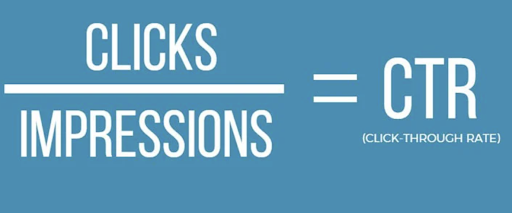The Role of CTR Manipulation in Enhancing Your Advertising Initiatives
CTR manipulation is a critical tool that holds the potential to substantially affect the success of advertising projects. By understanding just how to efficiently fine-tune click-through rates, businesses can witness a rise in their on the internet exposure and involvement levels (LinkDaddy CTR Manipulation). However, the moral ramifications and long-lasting effects of such activities stay a subject of discussion. As marketing experts navigate through the ever-evolving electronic landscape, the equilibrium between leveraging CTR control for competitive benefit and preserving authenticity ends up being a crucial point of consideration.
Comprehending CTR Manipulation Techniques
Evaluating the strategic execution of click-through price (CTR) control strategies supplies insights right into the complex systems underlying electronic marketing practices. CTR manipulation involves various methods intended at raising the portion of users that click on a particular link, inevitably driving web traffic to a specific website.

Benefits of Boosted Click-Through Fees
Enhanced Click-Through Rates offer services a beneficial chance to enhance their online presence and drive even more targeted web traffic to their sites. By enhancing CTR, companies can effectively boost the number of individuals clicking on their ads or web site web links, resulting in a higher volume of prospective clients engaging with their material. This increased involvement not just enhances site web traffic however additionally improves brand name acknowledgment and credibility.
Furthermore, a higher CTR can favorably impact a firm's search engine rankings. Search engines like Google think about CTR as a vital aspect in identifying the importance and quality of a site. Web sites with higher click-through rates are usually viewed as better and are, as a result, most likely to appear greater in search results page, resulting in enhanced natural traffic.
Additionally, increased click-through rates can likewise bring about a greater conversion price. When more customers are clicking your advertisements or links, the probability of converting those clicks right into actual sales or leads boosts (CTR Manipulation). This can inevitably cause a greater roi (ROI) for your advertising and marketing initiatives
Carrying Out CTR Approaches Effectively
To enhance the influence of click-through prices in advertising and marketing projects, businesses need to strategically deploy and improve their CTR methods. One efficient technique is to carry out A/B screening with different advertisement duplicates, headings, and visuals to identify which mix produces the highest possible CTR. It's essential to tailor approaches to particular platforms; what jobs on one system may not be as efficient on another. Additionally, using engaging calls-to-action can substantially improve CTR. Services should likewise concentrate on boosting web site packing speed and mobile responsiveness, as slow-loading pages can hinder individuals from clicking via. Tracking and evaluating CTR information consistently is crucial to recognize trends and make essential adjustments. Segmenting the target market and targeting details demographics can help tailor techniques for various client groups. By continuously exploring, assessing outcomes, and adapting methods accordingly, services can improve their CTR efficiency and drive more purposeful involvement with their target audience.
Tools for Checking CTR Efficiency
Reliable monitoring of click-through price (CTR) performance can be facilitated via the use of specialized logical tools developed to provide extensive insights right into user involvement with advertising material. These devices play a critical duty in aiding online marketers track and examine CTR information to make informed choices and enhance their campaigns efficiently.

Another valuable device is SEMrush, which gives comprehensive CTR analysis for natural and paid search results page. Marketing professionals can track CTR trends in time, compare their efficiency to rivals, and uncover possibilities for renovation.
Additionally, tools like Hotjar and Crazy Egg offer heatmapping and customer session taping attributes, permitting marketers to envision just how users interact with their content and recognize areas for CTR optimization. By leveraging these devices, online marketers can gain important insights to enhance their CTR performance and drive better results from their advertising initiatives.
Determining Success Through CTR Analysis
Marketers can determine the impact of their advertising and marketing projects by evaluating click-through rates (CTR) to determine success and improve methods accordingly. CTR evaluation is a crucial tool in examining the effectiveness of electronic advertising and GMB CTR Manipulation marketing initiatives. By tracking the percentage of customers that click a specific web link or advertisement, marketing experts can assess the level of interaction and rate of interest generated by their projects.
Gauging success via CTR analysis gives valuable understandings into the performance of various advertising and marketing efforts. A high CTR shows that the project reverberated well with the target market, causing boosted traffic and possible conversions. On the various other hand, a reduced CTR may symbolize the demand for adjustments in messaging, targeting, or design to improve project efficiency.
In addition, CTR evaluation enables marketers to compare the performance of various projects, networks, or ad creatives. By determining which strategies produce the greatest CTR, marketers can allot sources better and maximize future advocate far better outcomes. On the whole, CTR analysis works as a crucial metric in reviewing advertising success and notifying data-driven decision-making.
Conclusion
Finally, CTR adjustment is a strategic approach that considerably impacts advertising initiatives by boosting click-through rates and ultimately driving conversions. By making use of numerous methods and devices to keep track of and optimize CTR performance, companies can attract much more targeted web traffic, improve brand visibility, and accomplish measurable success in their advertising projects. Continuous evaluation and improvement of CTR methods are vital for making best use of the efficiency of digital advertising and marketing initiatives.